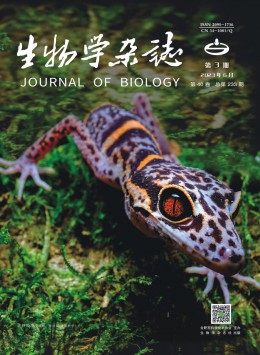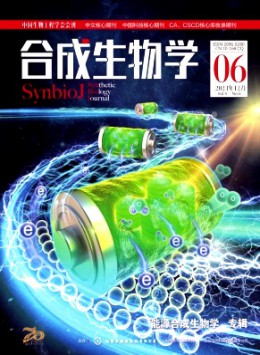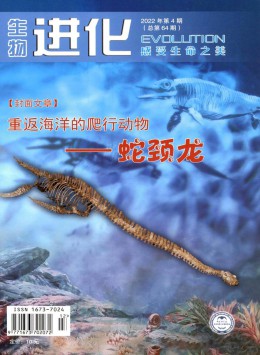生物多樣性的好處精選(九篇)
前言:一篇好文章的誕生,需要你不斷地搜集資料、整理思路,本站小編為你收集了豐富的生物多樣性的好處主題范文,僅供參考,歡迎閱讀并收藏。
第1篇:生物多樣性的好處范文
關鍵詞 轉基因作物;作物多樣性;農業生態系統多樣性;育種
中圖分類號 Q344+.11 文獻標識碼 A 文章編號 1007-5739(2016)02-0015-04
Abstract The potential impact of transgenic crops on biodiversity has been a topic of interest both in China and abroad. This paper reviewed the advances of the researches that based on the impact of transgenic crops on crop biodiversity and agro-biodiversity. The agro-biodiversity included following aspects:the major influence on soil communities of micro- and other organisms from transgenic crops;the effect of herbicide-resistant transgenic crops on the composition of weed communities;the effect of insect-resistant transgenic crops on target pest and non-target organisms;and the herbicides and pesticides application effect on transgenic crops. Based on the review,the conclusion may be drown that transgenic crops could continue to decrease the pressure on biodiversity. The negative factors should be reduced to the lowest level of the new variety breeding of transgenic plants.
Key words transgenic crop;crop biodiversity;agro-biodiversity;breeding
生物多樣性的物質實體就是資源,是人類賴以生存的物質基礎。人類基本的食物和各種工業原料源自生物多樣性,一些非常有價值的育種性狀(如抗病抗蟲性狀、優質性狀和高產性狀)的基因也來自生物多樣性[1]。生物多樣性在生態系統的維持中起著重要的作用,同時,生態系統的穩定性是作物生物多樣性存在的基礎,兩者相輔相成。隨著現代生物技術的應用,轉基因作物對農業生物多樣性和農業生態的影響受到了廣泛的關注[1-3]。轉基因作物到底該不該種植這一話題也一直是媒體和群眾的熱議話題之一,轉基因作物對農業生物多樣性的影響主要包括抗除草劑轉基因作物、轉Bt抗蟲作物的種植對生物多樣性的影響和轉基因作物的雜草和害蟲的田間管理兩部分內容。該文綜述了轉基因作物對作物多樣性和農業生態多樣性影響的國內外研究進展,旨在為轉基因作物育種的發展提供參考。
1 轉基因作物的種植對作物多樣性的影響
作物多樣性大致有2層含義,第一是指栽培作物種類的多樣性;第二是指同一作物種類品種和生態類型的多樣性。合理安排作物布局,保持農田作物種類的多樣性,對增加糧食生產的穩定性具有重要的意義。近年來,轉基因作物也有一定面積的種植,在農業生產上得到較多的應用。轉基因作物的種植也在影響生物多樣性。
轉基因作物對生物多樣性的潛在影響已經是一個大家普遍感興趣的話題,在生物多樣性公約簽署的背景下,這一話題更受到關注。在最近的綜述文章中,著名生態學家Carpenter[4]從遺傳多樣性的角度分析了大量文獻中報道的轉基因作物對環境的影響,范圍涉及到具體作物、農場范圍及更大的區域規模。目前在轉基因經濟作物種植地區,通過增加保護性耕種措施、減少殺蟲劑使用和使用更加環保的除草劑等方法降低了農業對生物多樣性的影響。
一般來說,在耕地上進行的農業生產效率越高,產量越高,可持續性則越強,生物多樣性受到的危害則越小。轉基因作物產量的增加也緩解了將更多土地轉換為農業用地的壓力,間接有利于生物多樣性。農業對生物多樣性最直接的消極影響是造成自然棲息地的大量喪失,這是由維持自然生態系統平衡必須的土地過多地轉化為農業用地所造成的。Carpenter[4]發現大量且不斷增長的論文顯示,轉基因作物的種植已經提高了產量,尤其是在發展中國家更為明顯。一份由Carpenter對全球農民所做的調查發現[5],發展中國家作物平均產量的增加率:抗蟲玉米為16%,抗蟲棉為30%,而在一份對抗除草劑玉米的單獨研究中,產量增加率是85%。發達國家農民的產量報告顯示,抗除草劑棉花沒有變化,抗除草劑大豆增加了7%。Brookes等[6]估計,產量提高帶來的好處是減少了土地轉化為農業用地。他們還估計,如果不使用生物技術,可能會有264萬hm2土地被用于糧食和油料作物的生產。
保護作物的多樣性是被廣泛認可的,更多的品種和物種多樣性能夠讓農業系統在不同環境條件下保持生產力的平衡。隨著轉基因作物的推廣,對作物基因多樣性減少的擔心隨之增加,因為育種項目將目光投向很少一部分有價值的品種。3項研究(美國關于棉花和大豆的研究、印度關于棉花的研究)已經分析了轉基因作物的引入對作物基因多樣性的影響。在美國對棉花和大豆基因多樣性的研究得出的結論是轉基因作物的推廣對生物多樣性的影響非常小,幾乎為零。相反,印度Bt抗蟲棉,因為剛開始只在少數品種中利用轉基因技術導致了農場品種生物多樣性的下降,但是隨著時間的推移,更多的抗蟲棉品種得以使用,這種現象得到緩解[5]。Carpenter[4]認為,長遠看來,轉基因作物通過增加未充分利用的替代作物的數量使他們更適于大范圍的馴養種植,從而增加了作物生物多樣性。
2 轉基因作物種植對農業生態系統部分物種的影響
農業生態系統是人們利用農業生物與非生物環境之間以及生物種群之間相互作用而建立起來的并按人類社會需求進行物質生產的有機整體。農業生態系統的目標是最大程度地獲取高產、優質產品,以滿足人口不斷增長的需要,其生物多樣性的組分和功能與自然生態系統的有所不同。農業生態系統的物種可分為生產性生物種(productivity biota),如農作物、林木、飼養動物等,其多樣性對系統的生產力、穩定性起重要作用;資源性生物種(resource biota),如傳粉昆蟲、害蟲天敵、微生物等,其多樣性對系統內的傳粉作用、害蟲生物控制、資源分解、促進養分循環有著重要的作用,從而間接影響系統的穩定性和生產力;破壞性生物種(destructive biota),如雜草、害蟲等,這些影響系統生產力的生物種是被控制的對象。
2.1 轉基因作物對微生物和土壤生物群落的影響
農業生物多樣性對微生物和土壤生物群體有主要作用,同時這些微生物和生物群體對土壤系統的功能有根本影響,如氮循環、廢物的分解、營養的調動。許多研究對轉Bt作物對土壤生物群落的潛在影響進行了深入分析。Icoz and Stotzky[7]基于70篇科學論文對Bt作物對土壤生態系統的影響研究進行了充分的論述。發現轉Bt植物對土壤中微生物組群的影響程度大小表現為從無影響到輕微影響再到顯著影響,他們是不同地理環境、溫度、植物品種和土壤類型作用的結果,一般來說,土壤類型的作用是暫時的,與Cry蛋白的存在無關。總體來說,Cry蛋白很少或者沒有對潮蟲、跳蟲、螨蟲、蚯蚓、線蟲、原生動物有毒性作用,關 瀟等[8]利用普通水稻和轉基因水稻作為材料,研究對土壤生物群落的影響,結果表明,非轉基因組土壤微生物群落結構特征具有一定的相似性,轉基因組也具有類似的土壤微生物群落結構;轉基因水稻與非轉基因組相比,土壤微生物生物總量差異不顯著,轉Bt基因水稻根際土壤中的細菌、真菌、放線菌隨季節變化趨勢明顯,轉基因組與非轉基因組之間無顯著差異(P>0.05),影響較小。
在美國東北部進行的一項研究中,Hoheisel和Fleischer[9]調查了瓢蟲和它的食物(蚜蟲和花粉)的季節動態,他們的研究對象是一個蔬菜農場系統,包括Bt甜玉米、Bt馬鈴薯和轉基因抗蟲南瓜。結果表明:轉基因蔬菜作物對瓢蟲提供了保護,減少了25%的農藥使用。在一份包含同樣作物的相似研究中,Leslie等[10]比較了在種植轉基因作物及近等基因系的環境中鞘翅目和蟻科在土表的聚居狀態,并未發現物種豐富度和物種組成有什么不同,但發現轉基因蔬菜需要的殺蟲劑更少。結果表明:遺傳修飾技術育種可以被應用于蔬菜病蟲害的綜合管理系統中,為轉基因蔬菜提供了新的有效的方法來控制害蟲和病原菌的傳播[11-12]。
2.2 抗除草劑轉基因作物對雜草群落的影響
轉基因植物田間釋放帶來的主要問題之一,就是抗性基因通過基因流轉移到野生植株,從而給農田生態環境造成潛在的危害,所以在釋放前對其潛在的基因漂移做出確切的評估是很必要的。轉基因作物的一個主要關注點在于轉基因性狀向雜草的任意傳播。已經有一些轉基因逃離和雜草獲得抗除草劑選擇優勢的證據[13-14]。抗除草劑基因從轉基因作物品種向近親雜草的轉移的風險已經在大田作物如芥菜/油菜、甜菜中得到證實[15-16]。Rose等[17]證實,“轉基因緩和策略”可能會對野生芥菜和油菜之間的雜交產生不良的遺傳負擔。轉基因緩和措施是一種對作物有利的矮化基因,但對雜草防控來說是有害的(雜草由于基因組成變化比同類的非轉基因雜草長得更快)。這一發現提出一個觀點,即轉基因植物總是賦予野生親緣植物所謂的健壯基因,使其更加強壯,具有轉變成超越同類的潛力并成為超級雜草,此外,Palaudelmàs等[18]發現,部分轉基因玉米活力低,很少結實和形成花粉,造成異花授粉率低。這樣,對轉基因植物的種植提出了一系列新的生態和經濟問題,讓科學家和政策制定者去考慮轉基因的限制問題。
作物生產實踐對雜草群落的組成有著顯著的影響。當地主要雜草種類的變化現象稱為雜草演變。在耐除草劑作物系統中,這樣的轉變和雜草管理是密切相關的,其中的耕作方式和除草劑的使用對雜草群落的演變有顯著影響。有文獻報道,在抗草甘膦作物中,有40種雜草(密切相關的物種的不同組群)的豐富度增加[4]。同一時間,在對美國6個州玉米、大豆和棉花的調查中,36%~70%的種植者反映:種植抗草甘膦作物,再實行輪作之后,雜草壓力已經降低。化學除草劑的使用也導致耐農藥雜草種群的發展,從而使雜草群落發生變化。在全球的15個國家中已經發現21種抗草甘膦雜草[4]。抗草甘膦雜草的出現需要調整雜草控制項目內容,采取一些實際措施控制抗性種群。
抗除草劑轉基因作物的引進已經和更多的保護性耕種措施聯系在一起,這些措施包括減少徑流、增加水分下滲和減少侵蝕等。在抗除草劑轉基因作物較大的種植國――美國和阿根廷,保護性耕作的應用趨勢已經得到廣泛關注,并開展了相關研究。然而,在這2個國家引進轉基因抗草甘膦作物之前,保護性耕種早已被一些種植者采用。一些研究已經顯示,保護性耕種與轉基因抗草甘膦作物之間有著積極的雙向因果關系。
2.3 轉基因Bt抗蟲作物對非靶標生物的影響
轉基因抗蟲作物自1996年被批準商業化種植以來,它的抗蟲性和經濟效益已得到了普遍肯定。Storer等[19]指出,預計種植轉Bt作物對農業生產最主要、最直接的影響是這些作物成為防治目標害蟲的理想物種,通常情況下,害蟲以這些作物作為主要食物來源,并且能夠在較大范圍內移動。種植轉Bt作物可自然形成較大范圍的區域害蟲的抑制,不僅減少了技術開發者的損失,還通過減少糧食損失或者減少使用害蟲控制措施(例如農藥)使非技術開發者和其他作物種植者獲益[4]。
轉基因抗蟲作物對非靶標生物的影響是多方面的,例如轉基因抗蟲作物的長期種植以后,次要害蟲是否上升為主要害蟲,是否會影響有益昆蟲,包括重要經濟昆蟲、捕食性和寄生性天敵以及重要蝶類的種類及種群數量等,構成轉基因抗蟲作物生態風險評估的重要內容。有研究調查了轉Bt玉米和棉花的引進對害蟲種群區域性暴發的影響,美國多地種植Bt玉米和棉花的地方以及中國種植Bt棉花地方的區域性害蟲抑制的效果[4]。轉基因作物對陸地上非靶標無脊椎動物的影響已經是大量室內試驗和區域研究的課題。截至2008年底,已經有超過360篇關于Bt作物對非靶標生物影響的原創論文被發表[20]。Naranjo對9種來自17個國家的轉Bt作物的135項基于實驗室的研究及來自13個國家的5種Bt作物的63項基于實驗田的研究,并采用meta分析技術進行分析。一般來說,實驗室研究比實驗田研究有更多重大發現的機會,這至少在生物研究的差異中得到解釋,同時實驗室研究相比實驗田研究有更多的蛋白質暴露機會。實驗田研究表現出更少的對非靶標生物的有害影響,同時殺蟲劑對非靶標生物影響比Bt作物大得多[20-21]。最近越來越多的關于Bt作物對非靶標生物影響的研究與Naranjo的結論一致[4]。楊 艷等[22]在總結國內外相關研究數據的基礎上,系統分析了轉基因抗蟲作物對非靶標蝶類和蠶類昆蟲的潛在影響,指出雖然蠶類和蝶類昆蟲對Cry1或Cry2類殺蟲蛋白敏感,但在自然條件下,這類非靶標昆蟲暴露于Cry殺蟲蛋白的水平很低,抗鱗翅目害蟲轉基因作物的種植對田間蝶類昆蟲的種群密度影響不顯著,不會給我國的蠶絲產業帶來負面影響。李麗莉等[23]認為轉基因抗蟲作物的花粉或花蜜是一些重要經濟昆蟲,如蜜蜂、熊蜂和一些寄生蜂,甚至捕食性天敵的食物來源,另外,花粉飄落到一些鱗翅目昆蟲如家蠶或重要蝶類昆蟲的寄主植物上,直接或間接對這些昆蟲造成一定影響。目前大多數研究表明轉基因抗蟲作物對非靶標昆蟲,特別是對有益昆蟲沒有明顯的不利影響。
3 除草劑和殺蟲劑在轉基因作物上的應用
轉基因作物的害蟲和雜草的田間管理已經導致了除草劑和殺蟲劑的使用。如果種植遺傳修飾抗蟲作物的農民減少了針對主要害蟲的廣譜殺蟲劑的使用,那么植物保護部門自然會抑制次要害蟲的種群,以便保護鳥類、嚙齒類動物和兩棲動物捕食的多樣性和豐富度。除了研究轉基因作物對非靶標生物影響及與傳統做法相比較外,一些研究還確定了自遺傳修飾作物引進后農藥的變化量。與阿根廷、澳大利亞、中國、印度和美國的傳統作物相比,農藥總活性物成分減少14%~75%[4]。Brookes和Barfoot[24]指出,農民種植轉基因作物可以減少噴灑9.1%的農藥,通常除草劑和殺蟲劑使用量的17.9%就可以達到防治效果,減少了對環境的影響。研究強調,轉基因作物明顯降低了作物種植區溫室氣體的排放,這些溫室氣體的排放量相當于2010年大街上860萬輛汽車尾氣的排放量。另外,很少研究得到耐除草劑轉基因作物對除草劑使用量變化的數據,或許是因為耐除草劑轉基因作物的用藥情況影響不同種類、數量除草劑的使用,因此,除草劑使用量的變化并不能作為環境影響的一個指標。一些研究已經采用環境指標來觀察殺蟲劑使用的變化,包括耐除草劑和耐殺蟲劑作物,在轉基因作物上的農藥使用情況與常規作物相比都表現降低了對環境的影響[4]。
Bennet等[25]對生物周期調查表明,耐除草劑的轉基因甜菜比傳統甜菜對環境有更小的損害。因為轉基因甜菜減少了除草劑制造、運輸和田地使用過程中的用量。美國科學院認為,隨著時間的推移,轉基因作物的一些效益預計會下降,隨著該技術被運用到更多的作物上,潛在的效益和風險也可能變得越來越大[26]。例如,自從1991年,Bt棉花植株在中國棉花生產中有效控制了棉鈴蟲的危害,減少了農藥的使用,增加了中國農民的收入。然而,2004年得到的數據顯示:這些效益正在被用量劇增的其他農藥削弱,這些農藥被用于控制次要害蟲[27]。這種現象已經被Wang等[27]證實,他曾經發現由于種植Bt棉花,防控次要害蟲的問題和殺蟲劑用量減少相比并沒那么重要。在美國,據環保局報道,另一種大田害蟲(根蟲)已經演變成對Bt毒素具有抵抗力[28]。
4 轉基因作物對生物多樣性的壓力和轉基因植物新品種選育
轉基因作物在過去15年間已經被商業化種植,從中可以看出生物多樣性對生態平衡有積極影響。通過增加產量、減少殺蟲劑使用、使用更多更環保的除草劑和采取保護性耕種措施,轉基因作物已經促進了農業的可持續發展。許多研究認為,轉基因作物對環境的影響很小,幾乎為零[4,20]。最近,美國國家研究委員會作出了一份對轉基因作物種植對農業可持續發展的綜合評價:一般來說,相比較于傳統種植的非轉基因作物,轉基因作物對環境有較小的負面影響[26]。因此,隨著全球農業系統的擴展,現代農業育種技術可以在現有農業用地的基礎上提高產量,在未來30~40年農業可預計養活繼續增加的世界人口,轉基因作物能夠繼續減少對生物多樣性的壓力,育種人員對保護生物多樣性作出了巨大貢獻[29]。
自然界中基因的橫向轉移現象廣泛存在,轉基因技術即是模仿自然界中的基因橫向轉移。自1996年轉基因作物產業化以來,已累計推廣15億hm2,2013年種植面積達到1.752億hm2,是1996年的100倍以上。目前,全世界27個國家種植轉基因作物,其中,19個發展中國家種植面積占54%,巴西達4 030萬hm2;美國是最大的轉基因作物種植國(7 010萬hm2),種植面積約90%為轉基因品種[30]。2008年我國啟動“轉基因生物新品種培育重大科技專項”重點支持水稻、小麥、玉米、大豆、棉花、豬、牛、羊生物的轉基因技術研發。萬建民[31]基于系統比較分析,建議我國進一步加強轉基因植物研發能力建設,夯實轉基因育種研究基礎,突破轉基因核心技術,培育轉基因植物新品種,加強產、學、研緊密結合,培育具有自主創新能力和市場競爭力的大型企業,同時加強科普宣傳,營造良好的社會氛圍,推進我國生物型新興產業的快速發展。
5 展望
從目前看來,轉基因抗除草劑和害蟲作物的種植,對農業生物多樣性的影響輕微。從長遠的角度考慮,轉基因作物的推廣可以通過增加產量、減少殺蟲劑的應用、使用更環保的除草劑及采用保護性耕作措施促進農業的可持續發展;這也從農業生物多樣性視角表明我國應發展轉基因植物育種。當然,任何事物的發展具有兩面性,加之轉基因作物研究的時間相對傳統作物較短,應該把轉基因作物對生物多樣性的潛在負面影響降到最低,以便更好地為農業生產服務。
6 參考文獻
[1] 聶呈榮,王建武,駱世明.轉基因植物對農業生物多樣性的影響[J].應用生態學報,2003,14(8):1369-137.
[2] ALTIERI M A.The ecological impacts of transgenic crops on agro-ecosystem health[J].Ecosyst Health,2000,16:13-23.
[3] LESLIE T W,HOHEISEL G A,BIDDINGER D J,et al.Transgenes Sustain Epigeal Insect Biodiversity in Diversified Vegetable Farm Systems[J].Environmental Entomology,2007,36:234-244.
[4] CARPENTER J.Impacts of GM Crops on Biodiversity[J].GM Crops,2011,22:7-23.
[5] CARPENTER J E.Peer-Reviewed Surveys Indicate Positive Impact of Commercialized GM Crops[J].Nature Biotechnology,2010,28:319-321.
[6] BROOKES G,YU T H,TOKGOZ S,et al.The Production and Price Impact of Biotech Corn,Canola,and Soybean Rops[C].AgBioForum,2010,13:25-52.
[7] ICOZ I,STOTZKY G.Fate and Effects of Insect-Resistant Bt Crops in Soil Ecosystems[J].Soil Biology and Biochemistry,2008,40:559-586.
[8] 關瀟,吳剛,王敏.轉Bt基因水稻對土壤微生物群落結構的影響[J].湖北農業科學,2015,12(5):1046-1052.
[9] HOHEISEL G A,FLEISCHE S J.Coccinelids,Aphids,and Pollen in Diversified Vegetable Fields with Transgenic and Isoline Cultivars[J].Journal of Insect Science,2007,27:1-12.
[10] LESLIE T W,HOHEISEL G A,BIDDINGER D J,et al.Transgenes Sustain Epigeal Insect Biodiversity in Diversified Vegetable Farm Systems[J].Environmental Entomology,2007,36:234-244.
[11] DIAS J S,ORTIZ R.Transgenic Vegetable Crops:Progress,Potentials and Prospects[J].Plant Breeding Reviews,2012,35:151-246.
[12] DIAS J S,ORTIZ R.Transgenic Vegetables for 21st Century Horticulture[J].Acta Horticulturae,2013,74:15-30.
[13] HANSEN L B,SIEGISMUND H R,J?RGENSEN R B.Progressive Introgression between Brassica napus(Oilseed Rape)and B. rapa[J].Heredity,2003,91:276-283.
[14] STEWART-JR,C N,HALFHILL M D,WARWICK S I.Transgene Introgression from Genetically Modified Crops to Their Wild Relatives[J].Nature Reviews Genetics,2003,24:806-817.
[15] BOUDRY P,BROOMBERG K,SAUMITOU-LAPRADE P,et al.Gene Escape in Transgenic Sugar Beet:What Can Be Learned from Molecular Studies of Weed Beet Populations? Proceedings of the 3rd International Symposium on the Biosafety,Results of Field Tests of Genetically-Modified Plants and Microorganisms[C].University of California,Division of Agriculture and Natural Resources,Oakland,1994:75-83.
[16] 鄭愛琴,強勝,宋小玲.抗除草劑轉基因油菜與野芥菜的雜交1代與5種常規栽培油菜回交后代的適合度[J].應用與環境生物學報,2014,20(3):337-344.
[17] ROSE C W,MILLWOOD R J,MOON H S,et al.Genetic Load and Transgenic Mitigating Genes in Transgenic Brassica rapa(Field Mustard)×Brassica napus(Oilseed Rape)Hybrid Populations[J].BMC Biotechno-logy,2009,9:93-103.
[18] PALAUDELMAS M,PENAS G,MELE E,et al.Effect of Volunteers on Maize Gene Flow[J].Transgenic Research,2009,18:583-594.
[19] STORER N P,DIVELY G P,HERMAN R A.Landscape Effects of Insect-Resistant Genetically Modified Crop[M].New York,Springer,2008:52-60.
[20] NARANJO S E.Impacts of Bt Crops on Non-Target Invertebrates and Insecticide Use Patterns[J].CAB Reviews:Perspectives in Agriculture,Veterinary Science,Nutrition and Natural Resources,2009,4:1-23.
[21] DUAN J J,LUNDGREN J G,NARANJO S,et al.Extrapolating Non-Target Risk of Bt Crops from Laboratory to Field[J].Biology Letters,2009,6:74-77.
[22] 楊艷,李云河,曹鳳勤,等.轉Bt基因抗蟲作物對鱗翅目非靶標昆蟲生態影響的研究進展[J].生物安全學報,2014,23(4):224-237.
[23] 李麗莉,王振營,何康來,等.轉基因抗蟲作物對非靶標昆蟲的影響[J].生態學報,2004,24(8):1797-1806.
[24] BROOKES G,BARFOOT P.Global Economic and Environmental Ben-efits of GM Crops Continue to Rise[M].Bioportfolio,UK-based PG Economics,2012:126-139.
[25] BENNET R,PHIPPS R,STRANGE A,et al.Environmental and Human Health Impacts of Growing Genetically Modified Herbicide-Tolerant Sugar Beet:A Life-Cycle Assessment[J].Plant Biotechnology Journal,2004,2:273-278.
[26] DAVID E E.National Research Council. The Impact of Genetically Engineered Crops on Farm Sustainability in the United States[M].Washington DC:National Academies,2010:21-27.
[27] WANG S,JUST D R,PINSTRUP-ANDERSEN P.Bt-Cotton and Secondary Pests[J].International Journal of Biotechnology,2008,10:113.
[28] GASSMANN A J,PETZOLD-MAXWELL J L,KEWESHAN R,et al.Field-Evolved Resistance to Bt Maize by Western Corn Rootworm[J].PLoS ONE,2011,16:226-239.
[29] SILVA DIAS J C.Plant Breeding for Harmony between Modern Agriculture Production and the Environment[J].Agricultural Sciences,2015,16:87-116.
第2篇:生物多樣性的好處范文
三農專家關心的其實是種子的多樣性,這不僅關系到拿什么來養活中國人,而且涉及能否讓全球人吃飽飯的問題,當然也關于正義和公平。
現在種子發展形成了雜交化、轉基因化趨勢,常規(傳統)育種的種子可能式微,因而將造成農業的危機。種子的多樣性是生物多樣性的問題之一。而生物多樣性并非只是指不同物種之間的共生和平衡,同時也涉及到同一個物種之間亞種的多樣性。
例如,水稻既要有轉基因水稻,也要有雜交水稻,更要保留傳統(育種)水稻。這樣做的好處不僅僅在于以后若遇天災人禍時種植者有備份和補救的種子,也在于為未來的育種和栽培提供了多樣的途徑,并創造了條件。例如,如果沒有少量的野生稻的存留,就不可能讓袁隆平培育出今天多種高產的雜交稻。
培育傳統種子的另一個重要原因在于,與轉基因之類的種子相比,傳統種子更是人類安身立命的法寶。轉基因等現代科技手段的育種當然是一種大有希望的科技手段,但是,這并不意味著是對傳統農業的革命。因為,與傳統育種相比,轉基因等技術并不穩定,需要時間和實踐的檢驗。因此,保留我們的祖先千萬年選擇出來的傳統種子,乃是保留人類的傳家之寶。
第3篇:生物多樣性的好處范文
根據ISAAA于2013年2月的年度報告,2012年,轉基因作物繼續在全球迅速推廣,并且在實現糧食、飼料、纖維和燃料增產的過程中取得巨大成就。
報告指出,原本不愿冒險的農民對轉基因作物的信心不斷增長,為全球轉基因作物未來增長打下廣泛和穩定的基礎。其主要原因是,轉基因作物為其帶來了可觀的、可持續的、社會經濟及環保效益。
應用最迅速的作物技術
自1996年開始商業化種植以來,全球轉基因作物已經連續第16年保持顯著增長勢頭。全球轉基因作物種植面積1996年僅為170萬公頃,2012年則達到前所未有的1.7億公頃,從而使得轉基因技術成為現代農業史上應用最為迅速的作物技術。
在1996年至2012年間,全球近30個國家的近億農民選擇種植轉基因作物,累計種植面積超過15億公頃,比美國或中國領土總面積還要大50%以上。
2012年,全球共有28個國家種植轉基因作物,其中包括20個發展中國家和8個發達國家。種植轉基因作物的發展中國家數量幾乎為發達國家的3倍。排名前10位國家的轉基因作物種植面積分別超過100萬公頃。世界人口的60%,即近40億人,生活在上述28個國家,為未來轉基因作物多樣化發展打下廣泛的基礎。
2012年,全球共有1730萬農民種植轉基因作物,比上年增加60萬,其中90%是發展中國家資源匱乏的小農戶。
2012年,巴西轉基因作物種植面積約占全球總量的21%;阿根廷轉基因大豆占全國大豆種植總面積的近100%;印度Bt棉花種植面積創歷史新高,達到1080萬公頃,占全國棉花種植總面積的93%。
美國繼續保持全球頭號轉基因作物種植國。2012年,美國轉基因作物種植面積為6950萬公頃,占全球總量的41%;轉基因玉米、大豆、棉花和甜菜分別占全國玉米、大豆、棉花和甜菜種植總面積的90%、93%、94%和95%。
加拿大轉基因油菜籽種植面積達到840萬公頃,占全國油菜籽種植總面積的近98%。
2012年,歐盟有5個國家(即西班牙、葡萄牙、捷克、斯洛伐克和羅馬尼亞)種植Bt玉米,面積達到12.9萬公頃,比上年11.45萬公頃增長13%;其中,西班牙占歐盟Bt玉米種植總面積的90%,轉基因玉米占國內玉米種植總面積的30%。轉基因棉花占澳大利亞棉花種植總面積的99.5%。據cropnosis公司的研究報告,2012年,全球轉基因種子的市場價值為148億美元,相當于同年全球作物保護市場646億美元的23%,或相當于商業種子市場340億美元的35%。
全球農民收獲的“終端產品”價值,則是轉基因種子價值的10倍以上。
在批準進口和釋放轉基因作物的59個國家和地區中,美國位居第一,其次為日本、加拿大、墨西哥、澳大利亞、韓國、新西蘭、歐盟、菲律賓、中國臺灣和南非。
轉基因作物貢獻巨大
一是改善糧食安全。轉基因作物可有效促進糧食、飼料和纖維安全及自給,包括通過持續增加農業生產力和提高農民經濟利益,提供更多實惠的糧食。1996年至2011年間,全球轉基因作物創造出的農民收益達到980億美元,其中51%來自生產成本下降(即耕犁、殺蟲劑噴灑以及勞動力的減少),49%來自3.28億噸作物增產。
二是保護生物多樣性。轉基因作物是一種節約耕地的技術,可在全球現有15億公頃耕地上獲得更高的生產率,因此有助于防止砍伐森林和保護生物多樣性。發展中國家每年流失大約1300萬公頃富有生物多樣性的熱帶雨林。1996年至2011年間轉基因作物增產的3.28億噸糧食、飼料和纖維,相當于節約了1.08億公頃土地。
三是有利于減輕貧困。轉基因作物可顯著提高生產力及收入,可作為農村經濟增長的引擎,幫助世界上的小型、資源貧乏農戶擺脫貧困。到目前為止,轉基因棉花和玉米已經幫助發展中國家1500萬資源貧乏小農戶增加收入。
四是減少農業對環境的影響。生物技術迄今為止帶來的好處包括:顯著減少殺蟲劑噴灑,節約礦物燃料,通過免耕或少耕地減少二氧化碳排放,通過使用耐除草劑轉基因作物實現免耕和水土保持。1996年至2011年間,殺蟲劑活性成分累計減少使用4.73億公斤,相當于節省8.9%的殺蟲劑。
第4篇:生物多樣性的好處范文
關鍵詞 銅鼓嶺,保護區,社區,管理,問卷調查
中圖分類號 X36;S759.9 文獻標識碼 A 文章編號 1002-2104(2010)08-0109-06 doi:10.3969/j.issn.1002-2104.2010.08.020
為了保護珍稀瀕危物種及各種典型的生態系統,建立自然保護區是當前應用最為廣泛的就地保護方法。保護區是目前全球保護策略的基礎,是保護生物多樣性、生態系統健康和生態系統服務功能的主要方式。
1 研究背景
據統計,到2006年3月,全球保護區面積占陸地總面積的11.58%,美國、德國等發達國家的保護區面積占到國土面積的20%以上。截止2008年底,我國已經建立2538個自然保護區,占國土面積的16.14%,其中國家級自然保護區303個,占全國自然保護區總面積的61.2%(mep.省略/plan/zkgb/2008zkgb/200906/t 20090609152549.htm)。建立大量的自然保護區對我國生物多樣性保護工作具有極其重要的意義,保護著大熊貓、朱NFDA1、金絲猴等特有珍稀物種及各種復雜的生態系統。
然而,這些保護區內部及其周邊通常居住著大量居民。而且,社區人口壓力大,交通不發達,基礎設施建設落后,信息閉塞,經濟發展水平較低。”據統計,平均每個保護區內部有常住居民近1.5萬,周邊則高達5萬之多[1]。這些居民大多世代定居,已經建立起一套與當地環境相適應的生活模式。在利用區內資源獲得生活資料和經濟收入的同時,他們還保留著一些傳統的保護意識和行為,對生物多樣性的長遠保護具有不可估量的作用[2-3]。除此之外,當地社區對自然保護區內生物多樣性的人為干擾也受到了學者們的廣泛重視。放牧、偷獵盜伐、采集非木林產品、土地開發、農業發展等人類活動[4-5]可能會導致森林中某些種群數量減少甚至滅絕,使野生動物的棲息地破碎化,逐漸將保護區“孤島化”[6-8]。另外,自然保護區早劃多劃、先劃后建、搶救為主、逐步完善的歷史建設背景,造成中國自然保護區的管理經費不足、經營與管理不分、與社區爭奪資源的現象非常普遍。
建立保護區的根本目的是為了保護區域生態安全,實現人類的可持續發展,是為人類的長遠福利而服務的。在研究并降低人類活動對生物多樣性的威脅和干擾的同時,保護區的建立和管理給當地社區帶來的影響也是極為深遠的。如果不清晰地認識到這一點,實現保護區與當地社區的可持續發展只是一句空話。保護區可以為當地社區提供各種使用價值,如藥用植物、木材、蜂蜜、飲用水、遺傳資源、旅游產品等,同時也會提供調節、文化和支持等非使用價值。目前,國內外保護區都廣泛開展生態旅游,一方面增加保護區的管理經費,另一方面提高當地社區的經濟收入和參與保護的積極性[9-11]。而且,保護區的建立本身對社區居民就有一定的環境教育意義。從長遠看來,通過教育的方式改變人們的傳統觀念有利于保護區內生物資源的可持續保護。然而,野生動物對社區莊稼和家畜的破壞則引起了當地社區的強烈不滿[12-13]。保護區內部及其周邊的社區一般并不富裕,野生動物的破壞通常會給他們的生活帶來嚴重的損失[14],而保護區所提供的補償則遠低于破壞量[15-16]。
為了全面研究保護區的建立和管理對當地社區的影響,從而為保護區與社區之間的可持續發展提出可行性的建議,本文以海南銅鼓嶺國家級自然保護區為例,調查了與海南銅鼓嶺自然保護區相鄰的9個自然村內的172位當地農民,對其發放調查問卷,并結合非正式訪談,來考察保護區的建立給當地居民的生活和利益所帶來的影響。對于周邊或內部居住著大量居民的保護區,本調查工作可以為其與周邊社區的協調共進提供參考和鑒戒。另外,由于銅鼓嶺自然保護區的社區管理工作尚不成熟,其管理經驗對于剛成立的保護區具有重要的借鑒意義,而且將當地社區納入保護區的管理規劃中對保護區與當地社區的長治久安具有前瞻性的作用。
2 研究區概況與研究方法
2.1 研究區概況
銅鼓嶺國家級自然保護區位于海南省文昌市境內(19°36′54″-19°41′21″N,110°58′30″-111°03′00″E),總面積為44.00 km2,其中陸地面積13.33 km2,海域面積30.67 km2,核心區面積9.95 km2。區內的銅鼓嶺主峰海拔338.2 m,是海南北部地區海拔最高點,被稱為“瓊東第一峰”。保護區距海南省省會海口市約110 km,距文昌市城鎮直線距離約30 km。該保護區1983年經原文昌縣人民政府批準建立,后經1985、1986年兩次擴大,于2003年1月經國務院批準晉升為國家級自然保護區。為了加強對保護區的管理,2005年8月成立了海南銅鼓嶺國家級自然保護區管理處。
區內動植物資源豐富,生物多樣性突出,分布著紅樹林植被、半紅樹林植被、濱海沙生植被、山麓叢林、熱帶常綠季雨矮林及局部人工林等類型。植物種類有908種以上,分屬162科587屬。區內的野生動物已證實有獸類10種、鳥類20余種及爬行類、兩棲類、昆蟲等多種動物,其中蟒蛇(Python molurus)屬于國家一級保護野生動物,獼猴(Macaca mulatta)、穿山甲(Manis pentadactyla)等屬于國家二級保護野生動物。區內淇水灣近岸海域分布有豐富的珊瑚礁資源及海洋生物。淺海珊瑚礁為典型的岸礁類型,主要有造礁石珊瑚、珊瑚藻、軟體動物及其它造礁生物。活珊瑚主要生長在基巖和珊瑚礁上。造礁石珊瑚是本區域內最典型的種群,種類有100多種,其中優勢種為各種鹿角珊瑚。另外,非造礁珊瑚、軟珊瑚、魚類、藻類、其它與珊瑚礁有關的底棲生物的種類也較豐富,如鮑魚、麒麟菜等。
劉?靜等:自然保護區與周邊社區的可持續發展中國人口•資源與環境 2010年 第8期研究表明,銅鼓嶺自然保護區的可持續發展總體水平不高,協調性較差,其中人口、環境對自然保護的制約表現最為突出[17],大多紅樹林已被破壞, 僅有小面積剩存, 物種數也較少[18]。保護區內沒有永久居民,周圍有25個自然村,分別屬于龍樓鎮的山海和紅海兩個村委會,居住著4 000多人,農村經濟結構以瓜菜、胡椒等熱作經濟和漁業為主,人均年收入3 067元[19]。目前,保護區管理人員較少,沒有足夠的經費來源,管理工作主要停留在林業看護上,許多資源調研、恢復工作都無力開展。而且,保護區周邊的居民生活困難,尤其是薪柴難以解決,經常到保護區內砍伐薪柴[20]。
2.2 研究方法
問卷調查方法便于短時間內開展較大規模的調查工作,節省人力、時間和經費,并便于對調查結果進行統計分析,在國內外得到了廣泛應用[10, 21-23]。同時,由于調查的匿名性,被調查者能較為真實地反映自己的現狀和態度。2007年9月,我們對海南銅鼓嶺國家級自然保護區周邊山海、紅海兩個村委會內的9個自然村進行了問卷調查,其中每個自然村隨機發放20份問卷,共回收調查問卷172份,其中有效問卷166份,有效率達到96.5%。對于閱讀困難的被調查者,我們雇傭并培訓了一位當地向導,將問卷翻譯給被調查者。被調查居民中有98.8%為漢族,其他為黎族和藏族。被調查者中本地人占96.4%,男女比例為3∶1,年齡基本上呈正態分布,峰值處于41-50歲之間。30.7%的被調查農戶年純收入在2 00 0-5 000元之間,25.9%的介于5 000元和1萬元之間,而6.6%的農戶年純收入不及1 000元 。另外,一半以上被調查者的受教育程度僅為初中,30.1%的僅讀過小學,0.6%的沒有受過任何教育。
本文從就業機會、野生動物的破壞及補償、對資源利用的限制、旅游的開展、環保意識和社區參與等6個方面來探討保護區的建立和管理給當地社區的生產生活帶來的影響,在此基礎上提出改進保護區管理能力、協調保護區與當地社區關系的建議。
3 結果與分析
調查結果表明,54.9%的被調查者認為保護區對其家庭和生活的正面影響大于負面影響,僅有9.6%的認為負面影響大于正面影響。下面從銅鼓嶺自然保護區對其周邊社區的正面和負面影響兩方面來具體探討。
3.1 銅鼓嶺自然保護區對當地社區的正面影響
位于銅鼓嶺自然保護區周邊的社區內有近一半的被調查者認為保護區對當地居民的家庭和生活沒有任何正面影響(見表1)。而認為保護區對周邊社區有所幫助的被調查農戶則將增加 居民的工作機會、發展旅游業提高居民收入水平和保護當地生態環境列為主要的正面影響。相比而言,為野生動物的破壞提供補助和對當地的農業活動提供經濟技術支持相對欠缺,選擇比例最低。
表1 銅鼓嶺自然保護區對當地社區的正面影響
Tab.1 Positive impacts of TNR on the adjacent communities
正面影響
Positive impacts頻數
Frequency百分比(%)
Percentage (%)沒有正面影響7444.6增加就業機會4024.1發展旅游業提高居民收入2414.5其它2414.5為老百姓尋找新能源1810.8對農業活動提供經濟和技術支持116.6為野生動物破壞莊稼和家畜提供補助42.4總計166100.0注:表中的頻數指的是該選項的選擇人數;百分比指的是對應頻數占總計人數的比例。由于問題為多項選擇題,所以各項百分比總和并不等于1。以下各表中的頻數和百分比含義亦如此。
根據現場實地調研可知,增加當地居民的就業機會主要是通過開展旅游來實現的,二者是相互促進的。雖然目前銅鼓嶺自然保護區尚且沒有形成系統的旅游規模,但是,77.7%的被調查農戶贊成保護區開展旅游,16.3%的已經從各種旅游形式中獲得收入來源,主要是通過經營旅館、餐廳等方式。
另外,建立保護區可以起到一定的宣傳教育作用,提高當地居民的環境保護意識,增加他們對保護區內野生動植物的了解。91.0%的被調查居民知道銅鼓嶺是自然保護區,且有近一半的人了解保護區內的動植物,可以說出大多數或者小部分動植物的名字。91.6%的農戶了解保護區的管理規定,知道保護區內禁止砍柴和打獵。問及如果保護區內所有的森林都被砍伐,而開發為農田,是否會影響他們的家庭和生活時,64.5%的被調查者認為負面影響大于正面影響。
3.2 銅鼓嶺自然保護區對當地社區的負面影響
從表2中可以看出,多于一半的被調查居民認為銅鼓嶺自然保護區的建立和管理對當地社區的生產生活沒有任何負面影響。而近1/4的認為最主要的負面影響是限制其利用區內的自然資源,即森林資源及海洋資源(見表2)。為了耕作土地,大多數當地居民都會飼養水牛。 由于保護區內禁止放牧,60.2%的居民需要購買飼料來喂養家畜。而且,銅鼓嶺自然保護區晉升為國家級之前,居住在保護區周邊的有些農戶在區內的山坡上種植了木麻黃和椰子樹;升為國家級保護區后,保護區禁止他們砍伐這些樹木,居民的不滿情緒比較大,認為保護區不關心甚至忽視當地老百姓的生活利益。調查中,有近20%的農戶反映其種植的莊稼和養殖的家畜曾受到過保護區內野生動物的破壞,但幾乎沒有得到任何補償。然而,從表2中可以看出,多于一半的被調查農戶認為保護區的管理政策沒有對其造成負面影響。
表2 銅鼓嶺自然保護區對當地社區的負面影響
Tab.2 Negative impacts of TNR on the adjacent communities
負面影響
Negative impacts頻數
Frequency百分比(%)
Percentage (%)沒有負面影響9154.8限制資源的利用4124.7忽視居民生存利益2515.1野生動物的破壞嚴重1710.2減少就業機會84.8旅游收入分配不均42.4其它10.6總計166100.0
4 討論和建議
從前文的調查結果中我們可以看出,銅鼓嶺自然保護區在增加周邊社區居民經濟收入和保護生態環境方面發揮了積極正面的作用。雖然銅鼓嶺保護區的旅游業尚未形成規模,但是對當地居民已經顯示出一定的效益和潛力。雖然生態旅游被認為是協調生物多樣性保護和社區經濟發展的最佳平衡點[24],然而,旅游業對保護區內的生物多樣性仍然存在一定程度的干擾和威脅[25-26],而且旅游產生的效益通常只掌握在少數人手中,很少達到承擔最大保護成本的當地社區[27-28]。
調查結果表明,保護區對當地居民利用區內生物資源的限制是保護區建立和管理給當地社區帶來的最大負面影響。這一結果同我們先前在四川臥龍國家級自然保護區[29]以及國內外一些其他學者的研究一致[30-32]。當地社區世代依賴保護區內的土地資源、森林資源和海洋資源,以此來維持他們的基本生活。在沒有找到替代資源的情況下,強行禁止當地居民使用保護區內的資源,可能導致偷獵盜伐現象惡化。
另外,當地社區對銅鼓嶺自然保護區的管理政策不甚明了。相當一部分被調查者不知道保護區陸地邊界的確切位置,對保護區的海域范圍也了解甚少。而且,34.9%的被調查農戶不了解保護區內的動植物。雖然國家級自然保護區的強制性管理辦法已經得到了廣泛宣傳,但是仍有30.1%的居民認為保護區內的藥材和水產品允許采集,3.6%的認為保護區內允許砍柴和打獵。而且,當地社區對保護區的建立和存在價值并不理解,22.8%的認為如果保護區內所有的森林都轉變為農田,對其家庭沒有任何影響,甚至好處大于壞處。由此可見,雖然保護區在保護生態環境方面的作用得到了社區的認可,但仍需繼續加強對周邊社區在管理政策、具體措施、生態服務功能等方面的教育。
總體而言,銅鼓嶺保護區的社區參與水平比較低。調查中,97.6%的農戶及其家人沒有在保護區內工作,83.1%的沒有從保護區內得到任何經濟收入。只有4.8%的被調查者參加過保護區舉辦的調查監測工作和相關的討論會。我國自然保護區的社區參與水平普遍不高,而增加社區參與是目前國內外保護區廣泛采用的管理辦法[24, 31, 33,34],不僅可以提高當地社區參與環境保護的積極性,增加他們的經濟收入,更重要的是可以將其從對保護區內自然資源的傳統依賴中解放出來,降低對生物多樣性的人為干擾,實現保護與發展的協調共進[35]。
銅鼓嶺保護區的被調查者中,認為保護區對當地社區沒有任何正面影響和負面影響的比例(分別為44.6%,54.8%)比我們先前在四川臥龍國家級自然保護區的研究結果[29](分別為6.4%,2.7%)大得多。究其原因主要有二,一方面,銅鼓嶺保護區的發展起步較晚,2003年才晉升為國家級,而臥龍保護區的升級則比銅鼓嶺早近30年,而且,銅鼓嶺保護區內社區參與程度較低,社區與保護區之間的溝通較之臥龍特別行政區的特殊體制少了很多;另一方面,保護區的建立和管理對保護區內部社區的影響大于其對保護區周邊社區的影響,先前在臥龍保護區所做的調查都是在保護區范圍內。孫若梅[36]在福建武夷山國家級自然保護區的調查結果也同樣表明保護區內部居民受其管理模式的影響大于周邊社區。
另外,本文主要討論自然保護區對當地社區的正面影響和負面影響,沒有涉及銅鼓嶺自然保護區周邊社區對保護區內生物多樣性的影響探討。銅鼓嶺保護區周邊社區有近三分之一的居民靠捕魚為生,除六到七月份為休漁時間外,其它時間基本都會在海中捕魚。近一半的被調查者反映,近幾年保護區內水產品的數量和種類已經大幅度下降。另外,保護區周邊還有一些蝦塘和房地產開發等人為活動,對保護區內的海洋生物多樣性有較大的負面影響。當地社區對保護區內生物多樣性的影響會在將來的研究工作中繼續開展。
為了協調自然保護區的生物多樣性保護和當地社區的經濟發展,建議從以下幾方面開展工作:
為社區尋找替代生計,拓展收入來源:針對目前當地社區收入來源單一,對自然資源依賴程度高的現狀,建議保護區管理部門盡其所能為社區居民提供信息等方面的幫助,著重為當地社區尋找替代生計,幫助和鼓勵當地居民到保護區外謀求生存。應充分運用開展生態旅游的契機,加大傳統文化旅游的開展力度,在少數民族地區充分展示傳統文化、、龍山林等地區特色。當地居民世代生存于此,一般對保護區內的生態環境非常了解。所以,建議保護區在日常巡護、生物多樣性監測和評價、開展生態旅游等過程中,應優先雇傭當地居民。
開展生態旅游,提高社區參與水平:建議將社區作為旅游發展主體納入旅游規劃、旅游開發等涉及旅游發展重大事宜的決策、執行體系中。在旅游景區制定開發規劃時要召集社區代表為景區的開發戰略和目標提出建議。另外,鼓勵社區參與旅游經濟活動,包括:優先雇傭當地居民,尤其是被征土地的農民,積極將他們吸納到旅游中來,如成立社區企業從事旅游景區交通、住宿、餐飲、景點經營活動;鼓勵社區居民以個體經營的方式獲得經濟收入,如開辦家庭旅館、餐館,承包旅游景點及景區內部交通等;制作具有當地民族特色的傳統手工藝品;組織社區居民從事景區的接待類等服務性工作等。還可以聘請社區居民進行日常防護工作,組織社區宣傳環境保護知識,成立專門的組織對環境保護的情況進行適時監督管理。
開展環境教育,提高環境保護意識:環境教育的形式應該多樣化。針對環境保護的法律法規、生態知識等內容,對當地的社區采取聲象資料和圖片展示、培訓、專題討論、現場示范參觀、散發宣傳材料等方法進行宣傳。在環境教育過程中,要充分發揮學校這塊教育陣地的功能和作用,使當地的中小學生建立起環境保護意識,將對今后的自然保護區建設和社區共管產生深遠影響。
參考文獻(References)
[1]蘇揚. 改善中國自然保護區管理的對策[J]. 綠色中國:理論版, 2004, (18): 25-28.[Su Yang. Countermeasures for Improving Management of Natural Reserves in China[J]. Green China, 2004,(18):25-28.]
[2]Berkes F, Colding J, Folke C. Rediscovery of Traditional Ecological Knowledge as Adaptive Management[J]. Ecological Applications, 2000, 10(5): 1251-62.
[3]Gadgil M, Berkes F, Folke C. Indigenous Knowledge for Biodiversity Conservation[J]. Ambio, 1993, 22(2-3): 151-56.
[4]趙建偉, 楊云中, 何順強. 西雙版納自然保護區周邊社區綜合治理[J]. 林業調查規劃, 2006, 31 (z1): 244-47.[Zhao Jianwei, Yang Yunzhong, He Shunqiang. Comprehensive Management of Adjacent Communities of Xishuangbanna Nature Reserve[J]. Forest Inventory and Planning, 2006, 31 (z1): 244-247.]
[5]周方林, 劉學榮, 李正林. 四川白羊自然保護區周邊社區非木材林產品采集的管理初探[J]. 四川林業科技, 2004, 25 (3): 71-73.[Zhou Fanglin, Liu Xuerong, Li Zhenglin. About the Collection and Mmanagement of Nonwoody Forest Products in Communities around Baiyang Nature Reserve in Sichuan[J]. Journal of Sichuan Forestry Science and Technology, 2004, 25 (3): 71-73.]
[6]李國忠, 馮學全, 蔡萬波等. 周邊社區對霧靈山自然保護區的影響及其根源分析[J]. 河北林業科技, 2002, (5): 36-38.[Li Guozhong, Feng Xuequan, Cai Wanbo, et al. Analysis on the Impacts and Their Sources of Peripheral Communities on Wulingshan Nature Reserve[J]. The Journal of Hebei Forestry Science and Technology, 2002, (5): 36-38.]
[7]趙明, 樊曉亮, 關立軍. 淺談人為干擾對霧靈山保護區生態影響及解決措施[J]. 河北林業科技, 2003, (3): 26-27.[Zhao Ming, Fan Xiaoliang, Guan Lijun. Ecological Influences of Human Disturbance upon Wulingshan Nature Reserve and the Counteracting Methods[J]. The Journal of Hebei Forestry Science and Technology, 2003, (3): 26-27.]
[8]Farwig N, Braun C, BoehningGaese K. Human Disturbance Reduces Genetic Diversity of an Endangered Tropical Tree, Prunus Africana: Rosaceae[J]. Conservation Genetics, 2008, 9 (2): 317-26.
[9]OhlSchacherer J, Mannigel E, Kirkby C, Shepard G H, Yu D W. Indigenous Ecotourism in the Amazon: A Case Study of 'Casa matsiguenka' in Manu National Park, Peru[J]. Environmental Conservation, 2008, 35 (1): 14-25.
[10]Cihar M, Stankova J. Attitudes of Stakeholders towards the Podyji/Thaya River Basin National Park in the Czech Republic[J]. Journal of Environmental Management, 2006, 81 (3): 273-85.
[11]劉婕, 曾濤, 蔡紅霞等. 九寨溝旅游開發對安多藏民族文化的影響[J]. 資源科學, 2004, 26 (4): 57-64.[Liu Jie, Zeng Tao, Cai Hongxia, et al. Impact of Tourism Development of Anduo Tibetan Culture in Jiuzhaigou Nature Reserve[J]. Resources Science, 2004,26(4): 57-64.]
[12]Maikhuri R K, Nautiyal S, Rao K S, Saxena K G. Conservation Policypeople Conflicts: a Case Study from Nanda Devi Biosphere Reserve (a World Heritage Site), India[J]. Forest Policy Economics, 2001, 2 (3-4): 355-65.
[13]Bandara R, Tisdell C. Comparison of Rural and Urban Attitudes to the Conservation of Asian Elephants in Sri Lanka: Empirical Evidence[J]. Biological Conservation, 2003, 110 (3): 327-42.
[14]Schwartzman S, Zimmerman B. Conservation Alliances with Indigenous Peoples of the Amazon[J]. Conservation Biology, 2005, 19 (3): 721-27.
[15]李揮. 關于我國自然保護區周邊社區野生動物侵入損失賠償問題: 基于生物經濟學模型的思考[J]. 生態經濟, 2007, (1): 28-30.[Li Yuhui. Amends for the Los ing of Communities around the National Nature Reservesbased on the Bioeconomics Model[J]. Ecological Economy, 2007, (1): 28-30.]
[16]Maikhuri R K, Nautiyal S, Rao K S, Chandrasekhar K, Gavali R, Saxena K G. Analysis and Resolution of Protected Areapeople Conflicts in Nanda Devi Biosphere Reserve, India[J]. Environmental Conservation, 2000, 27 (1): 43-53.
[17]吳江濤, 唐文浩, 欒喬林等. 自然保護區及周邊社區區域可持續發展評價研究――以海南銅鼓嶺自然保護區及周邊社區區域為例[J]. 華南熱帶農業大學學報, 2007, 13(3): 30-34.[Wu Jiangtao, Tang Wenhao, Luan Qiaolin, et al. Study on Sustainable Development of Nature Reserves and Its EvaluationWith Hainan Tongguling Nature Reserve and Local Community as an Example[J]. Journal of South China University of Tropical Agriculture, 2007, 13 (3): 30-34.]
[18]車秀芬, 楊小波, 岳平等. 銅鼓嶺國家級自然保護區植物多樣性[J]. 生物多樣性, 2006, 14 (4): 292-99.[Che Xiufen, Yang Xiaobo, Yue Ping, et al. Species Diversity of Forests in Tongguling National Nature Reserve, Hainan[J]. Biodiversity Science, 2006, 14 (4): 292-99.]
[19]吳計生, 劉惠清, 劉小曼. 周邊區域景觀破碎對銅鼓嶺國家級自然保護區的壓力分析[J]. 生態學雜志, 2006, 25 (4): 405-409.[Wu Jisheng, Liu Huiqing, Liu Xiaoman.Stress of Surrounding Areas Landscape Fragmentation on Tongguling National Nature Reserve[J]. Chinese Journal of Ecology, 2006, 25 (4): 405-409.]
[20]薛達元. 銅鼓嶺自然保護區及其周圍地區資源管理技術探討[J]. 生態與農村環境學報, 1993, (1): 9-11,17.[Xue Dayuan. Discussion on Resouce Mangement Techniques of Tongguling Nature Reserve and the Adjacent Community[J]. Journal of Ecology and Rural Environment, 1993, (1): 9-11,17.]
[21]Spiteri A, Nepal S K. Evaluating Local Benefits from Conservation in Nepal's Annapurna Conservation Area[J]. Environmental Management, 2008, 42 (3): 391-401.
[22]Weladji R B, Moe S R, Vedeld P. Stakeholder Attitudes towards Wildlife Policy and the Benoue Wildlife Conservation Area, North Cameroon[J]. Environmental Conservation, 2003, 30 (4): 334-43.
[23]賴慶奎, 李建欽, 孟祥勇. 云南省文山國家級自然保護區社區共管案例調查分析[J]. 林業與社會, 2004, 12 (3): 18-23.[Lai Qingkui, Li Jianqin, Meng Xiangyong. Case Analysis on Community Comanagement in Wenshan National Nature Reserve, Sichuan[J]. Forestry and Society Journal, 2004, 12(3): 18-23.]
[24]諸葛仁, 陳艇舫, 特里.德拉西. 武夷山自然保護區資源管理中社區參與機制的探討[J]. 農村生態環境, 2000, 16 (1): 47-52.[Zhuge Ren, Chen Tingfang, De Lacy T.An Approach to Involving Local Communities into Participatory Management of Natural Resources in Wuyishan National Reserve in Fujian[J]. Rural Journal of Ecology and Rural Environment, 2000,16(1): 47-52.]
[25]Cheng Z H, Zhang J T, Wu B H, Niu L Q. Relationship Between Tourism Development and Vegetated Landscapes in Luya Mountain Nature Reserve, Shanxi, China[J]. Environmental Management, 2005, 36 (3): 374-81.
[26]Coombes E G, Jones A P, Sutherland W J. The Biodiversity Implications of Changes in Coastal Tourism Due to Climate Change[J]. Environmental Conservation, 2008, 35 (4): 319-30.
[27]Walpole M J, Goodwin H J. Local Attitudes towards Conservation and Tourism around Komodo National Park, Indonesia[J]. Environmental Conservation, 2001, 28 (2): 160-66.
[28]Peters J. Transforming the Integrated Conservation and Development Project (ICDP) Approach: Observations from the Ranomafana National Park Project, Madagascar[J]. Journal of Agricultural & Environmental Ethics, 1998, 11 (1): 17-47.
[29]劉靜, 苗鴻, 鄭華, 等. 臥龍自然保護區與當地社區關系模式探討[J]. 生態學報, 2009, 29 (1): 259-71.[Liu Jing, Miao Hong, Zheng Hua, et al. Discussion about the Relationship Pattern between Wolong Nature Reserve and Local Community[J]. Acta Ecologica Sinica, 2009, 29(1):259-271.]
[30]Nepal S K. Involving Indigenous Peoples in Protected Area Management: Comparative Perspectives from Nepal, Thailand, and China[J]. Environmental Management, 2002, 30 (6): 748-63.
[31]苗鴻, 歐陽志云, 王效科. 中國自然保護區的社區參與機制研究[J]. 林業工作研究, 2006, (7): 57-68.[Miao Hong, Ouyang Zhiyun, Wang Xiaoke. Research on the Communityparticipation Mechanism in Chinese Nature Reserves[J]. Linye Gongzuo Yanjiu, 2006, (7): 57-68.]
[32]高平, 溫亞利. 我國自然保護區周邊社區貧困特征、成因及對策[J]. 農業現代化研究, 2004, 25 (4): 255-57.[Gao Ping, Wen Yali. Characters, Cause of Poverty and Its Countermeasures in Peripheral Communities of China's Natural Reserves[J]. Research of Agricultural Modernization, 2004, 25(4): 255-257.]
[33]Tobey J, Torell E. Coastal Poverty and MPA Management in Mainland Tanzania and Zanzibar[J]. Ocean & Coastal Management, 2006, 49 (11): 834-54.
[34]任嘯. 自然保護區的社區參與管理模式探索:以九寨溝自然保護區為例[J]. 旅游科學, 2005, 19 (3): 16-19,25.[Ren Xiao. A Probe into Community Participation Managerial Mode of Natural Protection Zones: A Case Study of Jiuzhaigou Natural Reserve Zone[J]. Tourism Science, 2005, 19(3): 16-19, 25.]
[35]李文軍. 自然保護區生態旅游的社區參與:九寨溝生物圈保護區案例研究. 見: 鄭玉歆,鄭易生. 自然文化遺產管理:中外理論與實踐[M]. 北京: 社會科學文獻出 版社, 2003: 211-21.[Li Wenjun. Community Participation in Ecotourism of Nature Reserves: A Case Study of Jiuzhaigou Biosphere Reserve. In: Zheng Yuxin, Zheng Yisheng. Management of Natural and Cultural Heritage: Theory and Practice in China and Abroad[M]. Beijing: Social Sciences Academic Press, 2003: 211-221.]
[36]孫若梅. 福建武夷山自然保護區對社區居民生活的影響[J]. 林業經濟問題, 1994, (2): 43-48.[Sun Ruomei. Impact of Wuyishan Nature Reserve on the Community Life, Analyzing on the Farmer Survey Result[J]. Problems of Forestry Economics, 1994, (2): 43-48.]
Sustainable Development Between Protected Areas and the Adjacent Communities
LIU Jing OUYANG Zhiyun MIAO Hong XU Weihua
(State Key Laboratory of Urban and Regional Ecology, Research Center for EcoEnvironmental Sciences, Chinese Academy of Sciences, Beijing 100085, China)
第5篇:生物多樣性的好處范文
關鍵詞:城市;綠地系統;景觀生態;規劃
中圖分類號:P901 文獻標識碼:A 文章編號:
城市綠地是城市人居環境支撐系統的主體,在維系人類生存與生態平衡中發揮著重要作用。但隨著城市化的加劇,城市周圍的農田、水面等自然生境被人工環境取代,市區建筑密度不斷增加,綠地空間縮小,破碎化日益嚴重,大大降低了城市景觀生態質量和物種多樣性。如何充分發揮城市綠地的功能和效應,改善城市生態環境,已引起規劃專家、管理者、公眾的重視。
一、城市綠地系統的涵義
城市綠地系統(Green space system)是指城市建成區或規劃區范圍內,以各種類型的綠地為組分構成的系統。從內涵上歸納,城市綠地系統具有園藝、生態和空間三種內涵。從這種意義上來解釋城市綠地系統,可以將它定義為在城市空間環境內,以自然植被和人工植被為主要存在形態的能發揮生態平衡功能,且其對城市生態、景觀和居民休閑生活有積極作用、綠化環境較好的區域,還包括連接各公園、生產防護綠地、居住綠地、風景區及市郊森林的綠色通道(Greenway)和能使市民接觸自然的水域[4]。它具有系統性、整體性、連續性、動態穩定性、多功能性、地域性的特征。
二、城市綠地系統景觀的重要作用
1、 美化景觀
城市綠地系統從本質上講,更具有開敝空間的內涵,國外學者往往將其等同。如城市綠地開放空間與古建筑、文物結合在一起,既保護了城市的歷史景觀,又豐富了綠地開放空間的文化內涵,城市綠地可美化市容市貌,增加城市建筑藝術效果,使建筑“錦上添花”,把城市和大自然緊密聯系起來。
2、吸收粉塵植物
特別是樹木對粉塵有明顯的阻擋、過濾和吸附作用。由于樹木有強大的樹冠,葉片被毛和分泌黏性的油脂,使得樹木具有滯塵作用。園林植被通過樹木降低風速而起到減塵作用;通過其枝葉對粉塵的截留和吸附作用,從而實現滯塵效應。
3、殺菌作用
城市空氣中散布著各種細菌微生物,其中不少是對人體有害的病菌。城市綠地可以減少細菌載體,從而使大氣中細菌數量減少;另一方面,還由于許多植物本身能分泌一種殺菌素而具有殺菌能力。據法國測定,在百貨商店,1m3 空氣中含菌量高達400萬個,林蔭道為58 萬個,園內為1000 個,而林區只有55 個。林區與百貨商店的空氣含菌量差7 萬倍。可見,在城市環境條件下,園林植被通過其枝葉的吸滯、過濾作用減少粉塵(作為細菌的載體)而減少城市空氣中細菌含量的功能應當引起足夠重視。
4、減弱噪聲
現代城市中,廠房、工地比比皆是,在生產過程中,由于震動、摩擦和撞擊等不斷產生噪音,
同時汽車、火車、飛機、輪船等也轟鳴尖叫。這些噪聲不僅影響人們的正常工作和學習,嚴重的還能危害人們的健康。植物,特別是林帶對防治噪聲有一定的作用。據測定,40m 寬的林帶可減低噪聲10~15dB,30m 寬的林帶可減低噪聲6~8dB,4.4m 寬的綠籬可減低噪聲6dB。樹木能減低噪聲,是因為聲能投射到枝葉上被反射各個方向,造成樹葉微振而使聲能消耗而減弱[9]。因此,噪聲的減弱是與樹冠、樹葉的形狀、大小、厚薄及林帶的寬度、高度、位置、配置方式等因素有密切關系,一般來說,分枝低的喬木減弱噪聲效果好,葉茂疏松的樹群能產生復雜的聲散射,其減噪作用亦顯著。
三、城市綠地系統景觀生態規劃措施
1、斑塊的合理分布
從城市景觀的角度出發,可依據面積大小,把綠地斑塊分為大、中、小型三類。在城市綠地系統中,大中型的綠色斑塊作為城市的“綠肺”,不僅具有多種的生態功能,同時也為景觀增色不少。小型的綠色斑塊則可以作為物種遷移和再定居的“踏腳石”,改善城市景觀的視覺效果,提高城市景觀的異質性,因此小型的綠地斑塊可以為景觀帶來大型斑塊所不具備的一些好處,應當看作是大型綠色斑塊的有益補充,但不能取而代之。大中型綠色斑塊雖然數量少,但總面積卻比小型斑塊大,故應以大中型綠色斑塊為主,小型綠色斑塊為補充,相對均勻地分布于城市綠地系統中,最大程度地發揮其生態環境效益。
2、廊道的合理分布
根據景觀生態學的研究成果,廊道必須有足夠的寬度才能發揮一定的作用。我國城市街道普遍狹窄,建筑擁擠,城市綠地系統中綠色廊道除改善小氣候外,主要還起分割屏障,連通的作用。在規劃市區邊緣時,根據地形和可能條件,設置營造較寬的城市防護林帶,并和鄰縣的農田防護林網連結。在規劃市區內時,要在居住區,集團之間營造隔離林帶,特別是工業區與居住區必須盡可能設置一定寬度的衛生防護林帶。
在城市綠地系統中,廊道能有機地連結不同地域、不同尺度的綠地,直接影響著城市綠地網絡的連通性及網絡結構功能的整體優化。連通性好的城市綠色廊道能在夏天引入涼風,消除熱島效應;在冬季能防止寒風的侵襲。故城市綠地系統中,綠色廊道必須成網狀分布,連成一個系統。
3、基質的合理分布
城市綠地系統中,居住區等基質應實行“大集中,小分散”的原則,使基質處于斑塊和廊道的包圍之中。應使人民生活在綠色之中,最大限度地親近自然,體現“城市在綠中”的特色。概括而言,城市綠地系統應建立綠色廊道組成的網絡骨架,其中公園,綠地等“斑塊”一般位于重要的“結點”位置,提供娛樂和游憩場所。只有這樣以整體觀來規劃,城市綠地系統才能達到最優化,也正因為如此,在園林綠化中,綠地往往成為規劃布置的重點,以此“點”結合“線”、“面”構成城市綠化網絡。
4、景觀異質性
異質性是景觀的重要屬性。據景觀生態學研究表明,景觀異質性越大,景觀的類型也越多,防止外來干擾的能力也就越強,生態系統因而就更加穩定。故景觀異質性的維持和發展是城市綠地系統規劃中不可忽視的問題。在城市園林綠地中,雖受地域和城市小氣候的共同因素所制約,但由于城市墊面的不同分布,不同地段存在較大差異,利用立地條件即環境資源景觀要素空間異質性可創造城市園林中異質而多樣的景觀。所以我們在城市綠地系統規劃中,強調各種不同類型、不同功能的綠地形式的廣泛共存,并十分注重每塊綠地的個性特征,其目的就是增加城市綠地系統中的景觀異質性。
5、生物多樣性
生物的多樣性是相對于場地原系統而言的。綠地構成的生物多樣性意味著其可持續發展彈性空間的增加,景觀生存能力的增強。這與城市功能的多樣化意味著發展機會的增多是一個道理。生物多樣性的創造同綠地景觀斑塊的構成量之間并沒有決定性的關系。重要的是在物種之間是否建立內在聯系,是否為它們的生存創造了生態環境。因此生物多樣性的研究重點是深度了解生物和它們所屬環境之間的關系。
總之,城市綠地系統生態規劃方法就是使城市綠色空間的拓展與城市人口經濟發展同步,實現城市生態環境的動態平衡、城市碳氧平衡、城市地下水平衡是確定城市綠地與水體的數量、尺度、種類格局的基礎,也是城市生態規劃方法的基本原則,重建城市綠色景觀廊道是城市綠色空間建設的關鍵。
參考文獻:
[1] 張華如.基于景觀生態學的城市綠地空間格局優化——以合肥市為例[J]. 現代城市研究. 2008(12)
[2] 趙昌隆,李長煥.創造良好的城市景觀綠地規劃[J]. 價值工程. 2010(30)
第6篇:生物多樣性的好處范文
隨著新課程改革的深入,多媒體現代教育技術進入生物課堂趨于常態化。多媒體在高中生物教學中有很大的優勢,它能夠把文字、圖像、聲音、動畫等多種因素綜合起來,并且能全方位、立體化地把信息形象生動地呈現給學生,調動學生學習的積極性,提高學習效率。多媒體與高中生物學教學的有效整合,能有效地促進高中生物教學質量的提高。
二、高中生物教學中多媒體應用中存在問題分析
在教學中,部分教師不考慮學科特點及教學內容的實際,為制課件而制課件,沒有真正發揮多媒體教學手段的作用。多媒體和傳統教學沒有有機的整合,發生了錯位,走進了多媒體教學的誤區。
(一)過多依賴于多媒體課件,師生之間缺乏互動,不利于教師的主導作用和學生的主體作用的發揮。
多媒體課堂教學中,學生的目光被電腦、屏幕、投影儀等所牽引,正常的師生交流被“人機交往”取代,嚴重地防礙了師生間情感的互動。有些教師使用多媒體教學手段,依然是傳統的“滿堂灌”的教法,只管擊鍵講解,師生很少交流,致使學生對課堂失去興趣。這一切不利于教師的主導作用和學生的主體作用的發揮。
(二)不能把握多媒體與生物課堂整合的最佳切入點,教學過程不理想。
多媒體教學只是課堂教學的輔助手段,不是教學的全部。有些教師在教學中應用多媒體教學手段時,不能把握多媒體與生物課堂整和的最佳切入點,缺乏二者整合的科學性,課堂教學過程不理想。
(三)教學信息量過大、節奏過快,教學的重難點不突出。
由于多媒體教學信息量大、節奏快,造成重難點不突出。信息過多使學生無法跟上課堂節奏,只是被動接受授課內容,缺乏思維過程,不利于學生掌握精細的知識難點和重點。在多媒體課件中插入過多的動畫或視頻文件,也容易分散學生注意力。
(四)教學內容的預置,易使教學與學生的實際脫節,不利于學生創造力的培養。
在教學過程中,教學內容是預置的,存在不能根據課堂的實際進行調整變通的問題,容易造成教學與學生實際脫節,同時也容易使學生禁錮在多媒體的程序中,不利于學生創造力的培養。
三、對策
(一)在生物學科教學中教師應根據實際,合理選擇多媒體。
1.根據學生的生理與心理特點選擇多媒體。
多媒體具有的聲、光、電的綜合刺激,能夠激發高中生的積極性,引起學生的注意。但大腦皮層長時間處于高度興奮狀態,容易使身心疲倦。因此,多媒體界面制作要平和自然,切忌花、艷、亂,同時要注意適時適度,切忌頻繁濫用。另外,根據高中學生的特點,教師應制作一些內容多、范圍廣的網絡型課件作為小組學習的資料,以提高學生的探究能力、創新能力,以及合作學習的能力。
2.根據教學內容選擇多媒體。
(1)并非所有的生物課都能運用多媒體教學
要最大限度地發揮多媒體的作用與效益,其展示的知識內容必須與教材相適應,與學生的認知水平相適應。高中生物學中有很多內容無須用多媒體來進行教學,有些教學內容學生能夠看得懂或通過自學能夠掌握,或其社會實踐和生活經驗已經具備,或只需教師作簡單指導便能理解并掌握。
(2)實驗課不宜用多媒體
生物學是以實驗為基礎的學科,實驗過程可以培養學生的動手能力和觀察能力及創新思維和創新能力。可以用實驗展示的現象或實驗本身一般不適宜用多媒體來替代。一些課堂上無法完成的演示實驗或現象以及現有條件下無法完成的經典實驗,可以通過電腦模擬來實現,幫助解決問題。如:噬菌體侵染細菌的實驗等,通過多媒體的展示,能收到良好的效果。
3.合理使用多媒體課件輔助生物教學,創設良好的學習環境,幫助學生理解、記憶。
教學中牽涉到微觀的現象或暫時觀察不到的現象以及復雜的生理過程等,教師可通過多媒體再現,為學生創設良好的學習環境,使學生能夠一目了然。
如DNA的結構以及復制過程、光合作用的基本過程、有氧呼吸的過程等都可以采用多媒體輔助教學以幫助學生理解、記憶。
4.以多媒體輔助教學增加課堂容量,調動學生的積極性。
生物教學中牽涉到知識量多、圖片、影音資料較多的章節,教師可以用多媒體輔助教學增加課堂的容量,同時增加課堂的趣味性,以調動學生的積極性。如教學動物激素調節、環境污染等內容時,可以引導學生分小組收集資料、整理制作演示文稿并進行多媒體展示,可以豐富課堂的容量,也能培養學生小組合作學習的精神。
5.根據課堂類型選擇多媒體。
(1)新授課,教師可以應用多媒體課件導入新課,以激發學生學習興趣,突出重點,突破難點。如教學人體的消化系統時,既可以通過演示靜態圖,觀察人體消化系統的組成,又可以通過各器官在三維空間上任意方向和角度的翻轉,觀察不同部位的形態結構和空間位置關系,使學生迅速準確地掌握構成消化系統的各器官形態和位置的有關知識,并可培養學生看問題要全面的觀點。
(2)復習課,可選擇多媒體來擴大課堂容量,濃縮教學內容,建立系統的科學認知體系,強化重難點。
(二)充分應用多媒體課件演示模式表現手法的多樣性,創設富有情趣的學習環境,寓學于樂、樂學互促。
教師可以充分應用多媒體課件演示模式表現手法的多樣性的特點,使用多媒體播放課件,利用電腦制造動畫,截取VCD片段,以增強說服力,使學生易于接受,以利于突破難點。還可以使課件內容游戲化,用計算機以豐富多彩的畫面、贊賞性或鼓勵性的言語、悅耳的音樂來創設富有情趣的學習環境,使學生在認識過程中體驗樂趣,又在樂趣的情感刺激下去探索新知識,最終實現學習的良性循環。
(三)嘗試網絡多媒體教學,培養學生的自主學習能力和創新能力,以提高學生的生物學素養。
教師應密切結合教學實際,收集、組織、開發必要的教學資源,建立不同層次、不同類型的資源庫,以保障學生自主學習、協作學習、探究學習。教師可以在網絡教室里,通過局域網,讓學生瀏覽網頁形式的課件。讓其根據老師所提問題在網頁課件中找到答案,并通過BBS或論壇反饋給老師。教師再作出回應。這樣借助網絡多媒體教學,設計學習任務,組建學習資源,讓學生親歷處理信息、開展交流、相互合作的過程,可以為學生創造主動學習的氛圍、激發學生的學習積極性,培養學生的的自學能力和創新能力。使學生在經歷和體驗過程中達到提高生物學素養的目的。
如環境保護、生物多樣性、野生生物保護、遺傳疾病、性教育等內容都可以嘗試網絡多媒體教學。如教學生物多樣性及其保護內容,教師可通過多媒體制作,把生物的多樣性及其價值進行展示,并使學生了解我國生物多樣性及保護情況,進而對本地的資源狀況進行收集整理,制作出符合實際的課件作品,讓學生既學習到相關生物學知識,又了解到本地的資源情況,增強他們對家鄉的熱愛,自覺地建立起保護家鄉自然資源的意識。
(四)構建互動課堂,實現教學相長和師生共同發展。
教師應用多媒體教學時,要構建師生互動課堂,實行教師的教與學生的學的統一,使教師與學生分享彼此的思考、經驗和知識,交流彼此的情感、體驗與觀念,豐富教學內容,求得新的發現,從而達到共識、共享、共進,實現教學相長和共同發展。
教學動物和人體三大營養物質代謝時,教師可適時地利用多媒體播放人體消化系統結構及消化食物過程,便于學生掌握相關知識并培養學習興趣,增加互動,達到更好的教學效果。
(五)開展形成性教學評價,全面考察學生生物科學素養,動態把握、及時引導學生情感、態度和價值觀的形成。
新課程提出關注學生在課堂教學中的表現應成為課堂教學評價的主要內容,包括學生在課堂師生互動、自主學習、同伴合作中的行為表現、參與熱情、情感體驗和探究、思考的過程等。教學評價要綜合運用各種形成性評價方式,全面考察學生生物科學素養的養成過程,并與教學過程相結合,動態把握、及時引導學生情感、態度和價值觀的形成。為了做好教學評價,教師可以利用“電子學習檔案袋”將每個學生在各方面的表現情況、學習能力,以及創造能力等記錄到檔案袋中。
四、結語
多媒體與高中生物教學的整合應根據學科教學需要及學生的實際,充分發揮多媒體的工具,尋找最佳結合點,突出教學重點,解決難點,探索規律,啟發思維。多媒體與高中生物學教學的整合要恰到好處,以發揮多媒體的最佳輔助效果,大面積提高高中生物教學質量。
參考文獻:
[1]侯長志.高中生物課堂中多媒體技術應用應注意的幾點問題[J].新課程學習(學術教育),2009,(03).
第7篇:生物多樣性的好處范文
關鍵詞:礦區 土地整治模式 生態修復 經驗 目標任務原則
土地整治是對低效利用、不合理利用和未利用的土地進行治理,對生產建設破壞和自然災害損毀的土地進行恢復利用。是提高土地利用率的活動。
一、山西省礦區土地整治的必要性
山西省由于煤炭資源分布地區廣大,煤種齊全,煤質優良,開采條件好,成為中國最主要的煤炭生產基地。然而煤炭資源在帶給人們巨大好處的同時,也引發了一系列的生態環境問題。主要表現為:
1.露天采礦造成表土剝離、地面挖損、地表壓占、植被破壞,加劇了水土流失與土地荒漠化。
2.井工采煤破壞了地層結構構造,引發地表沉陷、裂縫。采煤沉陷區地質災害類型以地裂縫、地面塌陷為主,其次為不穩定斜坡崩塌、滑坡和潛在泥石流,以及煤層自燃。衍生造成的環境效應主要有:生態環境破壞、耕地損毀、地下水位下降、土地流失和沙漠化、水源污染枯竭等。根據初步調查,山西省因采煤造成的采空區面積近5000km2,其中沉陷區面積約3000km2。受災人口約230萬人。
3.長期采煤活動使煤系地層以上水資源系統遭到改變和破壞,形成以礦井為中心的區域性地下水漏斗,導致地下水位下降、水資源枯竭。
4.煤礦中大量煤矸石的堆積,煤矸石中含有大量硫鐵礦和鋅、鉛等重金屬元素,煤矸石的自燃或雨水淋溶,使大氣、周圍土壤和水體受到污染,影響生物的新陳代謝,導致生態系統結構與功能的失調。
山西省礦區業已成為典型的、嚴重受損生態系統。因此,預防和治理煤礦區的土地退化、塌陷等問題,已成為煤礦區的當務之急。
.
二、山西省開展礦區土地整治工作的經驗
“十二五”期間,全省積極開展歷史遺留的采煤塌陷土地的復墾,先后在全省安排實施農業綜合開發土地復墾項目3個,總投資達2781萬元,復墾土地0.13萬hm2(1.9萬畝)。在重點采煤縣實施土地復墾項目7個,投資達8796萬元,復墾土地0.21萬hm2(3.2萬畝)。從2008年起,開展了對報國土資源部及山西省審批礦權及土地的土地復墾方案預審和審查工作。積極開展了全省土地復墾工作現狀的調查,編制形成了《山西省土地復墾工程建設標準》。礦區土地整治取得的經驗有:第一,礦區土地整治與生態環境的修復相結合,礦區土地整治主要工程有:地表沉陷治理、煤矸石治理、水資源保護、土地復墾、水土保持、礦區造林綠化、植被恢復、生物多樣性保護、污水處理和中水回用、礦區居民環境條件改善、生態環境監管能力建設等。通過礦區土地整治與生態修復相結合,初步提升了礦山土地質量、恢復植被、增加了生物多樣性。第二,山水林田礦綜合整治,把山水林田礦作為一個生命共同體,實行綜合治理,提升礦區生態環境和人居環境質量。第三,園地制宜,根據不同情況采取相適應的整治技術措施。
三、礦區土地整治的目標、任務和原則
山西省是能源大省,能源的開采給山西生態環境帶來嚴重的破壞。礦區土地整治目標是:以保護生態環境為前提,大力推進礦區土地復墾和采煤沉陷區綜合治理,實施山水林田礦綜合整治,土地整治與生態修復工程相結合,實行耕地數量、質量、生態三位一體保護,促進土地資源永續利用。
山西礦區土地整治工作的主要任務是:在礦區生態恢復中發揮建設性作用,工程措施與生物措施相結合,平整土地、改良土壤、恢復植被,促進礦區的生物多樣性的恢復。
山西礦區土地整治工作的主要原則是:
――礦區土地整治要依據礦山地質環境所處的地理條件、災害環境類型,遵循自然恢復和人工修復相結合的原則,宜農則農、宜林則林、宜塘則塘、宜游則游、宜建則建的生態理念,因地制宜,分類實施。
――土壤是農作物生長的基質,受污染土壤的改良是生態恢復與重建的基礎和關鍵。采煤區由于受塌陷、斷裂、剝離、機械受壓等擾動,加之有毒物質通過淋溶、污水滲透等方式進入土壤,使土壤理化性質、土體結構、肥力等發生根本性改變。已經不能滿足植物生長。而利用植被修復土壤是最有效、最直接的技術對策。土地整治工作中,選擇當地的土著植被種類,在礦區進行生態修復和重建,并合理安排喬、灌、草栽種比例、密度及空間配置。
――礦區排出的廢水,含有大量無機鹽離子、重金屬等,不僅嚴重污染地表水體、地下水源。而且造成水源的嚴重浪費。通過技術處理,將廢水凈化,土地整治工作中可將這部分水資源用于礦區植被恢復或農業灌溉,用以緩解當地水資源短缺的壓力。
四、礦區土地整治的模式
礦區呈斑塊狀分布在各個土地整治區中,目前山西省的采礦方式主要是井工開采和露天開采。
1.露天礦區的土地整治模式。以平朔煤礦為代表,露天采礦造成地面挖損、地表壓占、植被破壞、土地利用格局改變等,因此露天煤礦土地整治時主要的任務是采取相應的工程措施和植被措施,實現礦區生態修復,保護生物多樣性。
――礦區土地整治按照“地貌重塑、土壤重構、植被重建、景觀重現、生物多樣性重組與保護”鏈條,重點是以人工植被建設為核心,迅速恢復礦區生態環境。
――因地制宜發展生態農牧業,按照人工林草種植一土壤熟化一恢復地力一耕地戰略儲Or--生態農業良性循環模式為主線,首先林草業種植,重建生態環境,為整個農業生態系統建立綠色保護屏障,通過育林、植樹載果,有效的控制風沙和水土流失,改善生態環境。
――建設以生態旅游休閑為中心,帶動綜合服務業發展。建設以礦區生態農業、休閑旅游、礦區主題樂園、生態餐廳、博物館等為主要內容的旅游景點,開發礦區復墾生態旅游項目。
2.采煤沉陷區土地整治模式。采煤沉陷區治理要本著綜合規劃、全面推進、加快建設的實施原則。以解決采煤沉陷區人居環境突出問題為重點,全面實施采煤沉陷區搬遷安置、土地復墾、地災治理、生態恢復等,恢復和改善采煤沉陷區生態環境,改善受災群眾的居住條件、生產條件、生活質量等。
計劃到2017年底,完成全省21.8萬戶、65.5萬人的搬遷安置任務。到2018年底,完成59個采煤沉陷區礦山環境恢復治理項目。歷史遺留礦山環境綜合治理率達到35%,完成40個重點復墾區的土地復墾任務,復墾土地面積達到310平方公里。
――采煤沉陷區治理,堅持環境治理與環境保護相統一、生態恢復與生態區劃相統一、土地整治與地質環境治理相統一、旅游開發與城鎮化建設相統一、產業開發與資源配置相統一,依據礦山地質環境所處的地理條件、災害環境類型,遵循自然恢復和人工修復相結合的原則,宜農則農、宜林則林、宜塘則塘、宜游則游、宜建則建。
――采煤沉陷區土地整治要采用多N新技術模式,如淺層沉陷區復墾耕地技術模式、深層沉陷區水產養殖技術模式、沉陷整治區人工林種植技術模式、沉陷區多元高效生態農業技術模式、沉陷區興建生態公園等休閑功能技術模式、沉陷區建設光伏農業模式等。
第8篇:生物多樣性的好處范文
而張暢煊的環保之路,正是從觀看了一部科幻電影后開始……
《后天》開啟他的環保之路
1999年7月出生的張暢煊,是南通市通州區育才中學初一(12)班學生。他不僅在全國中小學生(江蘇地區)金鑰匙科技競賽中獲得了特等獎,還在江蘇省少兒書信大賽中獲得一等獎、在南通幣“小巧手”比賽中獲得團體特等獎。此外,他還是業余鋼琴十級,是南通市的“三好標兵”,是學校里的“陽光少年”、“讀書小博士”、“十佳小指揮”、“優秀小樂手”、“十佳小歌手”。
張暢煊之所以下定決心要做一名環保小衛士,源于看完科幻電影《后天》所受的強烈震撼,這是一部美國科幻電影,描繪的是地球一天之內突然急劇降溫、進入冰川期的故事。那時張暢煊仍在通州小學上學,還只是一名小學生,但他已經覺得環保需要每個人落實到行動上,需要落實到每一天的生活中。他向班主任建議,讓全班同學一起觀看這部電影,然后討論。中隊會上,同學們的收獲很大,張暢煊與同學交流了一些環保方面的資料,他們一起用舊衣服做環保袋,將飲料的空罐子做成花瓶,還商討了許多環保小竅門,如自來水的多次使用、合理調節空調溫度、不用一次性塑料袋、冰箱門不長時間打開、電視機等電器避免處于待機狀態等。張暢煊還在少先隊大隊輔導員的幫助下,向全校同學發出環保倡議。他在集體晨會上的響亮發言,讓更多的同學有了自覺行動。
之后,張暢煊率領隊友用環保材料設計制作的作品,獲得了南通市“小巧手”比賽的團體特等獎,他還參加省“金鑰匙”科技競賽獲特等獎,并作為南通市小學生代表,赴南京參加全省金鑰匙科技競賽團體賽獲二等獎。
外婆家的水污分流改造工程
張暢煊是一位堅持不懈的環保小衛士,家人也在他的要求和督促下,紛紛加入了環保志愿者行列。
鄉下外婆要改善生活環境,搭建一個衛生間。張暢煊跟在大人后面也忙得不亦樂乎。可他很快地發現了問題——污水管將直接通向西邊的池塘,他忙指出這個設計上的失誤。起初,外婆不把張暢煊的話當回事,覺得重建化糞池,費時費力又費錢。但他下決心要說服外婆,于是一遍遍不厭其煩地告訴外婆這樣做的嚴重后果,又打開電腦,搜索水污染的相關圖片資料講解給外婆聽。最后,他還請來爸爸媽媽當援兵。識字不多的外婆終于被說服了,他高興地拿出壓歲錢來支持。于是,新的水污分流改造工程又熱火了起來,還引來了不少鄰居觀看。
由外婆家的改造工程,張暢煊想到許多河流的現狀。于是,他利用假期,騎著自行車去了好幾個村莊做調查研究。他發現許多小河的水污染情況有所不同,而且各個村莊對水資源的保護力度也不同。后來,他將調查結果寫成小論文《清澈的池塘,美麗的家》。
環保小衛士走出國門
2010年7月,張暢煊把這篇文章通過電子郵件發送到聯合國環境規劃署,令他沒想到的是,這篇文章居然引起了聯合國科學家們的興趣和關注。
2010年10月,張暢煊應邀參加了聯合國環境規劃署在日本名古屋舉辦的“世界兒童環境會議”。會議期間,他積極參與各項活動,和各國兒童代表一起交流保護生物多樣性的做法,探討保護生態系統的計劃,繪制生物多樣性地圖,參與河塘疏浚工作等。
第9篇:生物多樣性的好處范文
關鍵詞:桉樹特點;節水;常綠植物;種植;科學管理
中圖分類號: S72 文獻標識碼:A 文章編號: 1674-0432(2011)-10-0171-2
1 桉樹
桉樹是一種常綠植物,在一年的周期中有老葉脫落現象。大多數為高大的喬木,少數也有小喬木,葉子多為單葉,又是葉子上有一層薄薄的蠟質,在植物的分類上屬于雙子葉植物綱。
2 桉樹的特點
桉樹中高大喬木喜光,喜濕,耐寒,耐熱,對低溫十分敏感。在我國的西南和南部都有種植,一般來講,桉樹多生長在陽光充足的平原,山坡和路旁。桉樹的樹冠很小,相對于其他的樹來講,透光性非常好,有利于樹下的草類植物的生長,同時桉樹是一種非常好的節水樹種。
3 人們對桉樹的認識的誤區
雖然桉樹不是罕見樹種,但是人們在對它的認識上存在這許多的誤解。
3.1 桉樹是一種費水的樹種
和其他樹種相比,桉樹生長速度很快,因此很多人認為桉樹是一種浪費水源的樹種,其實不然,根據許多的研究報告表明,桉樹每合成一公斤的生物量,桉樹只需要消耗500多公升水,而松樹要消耗1000多公升的水,就算是香蕉大概也要800多公升。可見,桉樹并不是大量消耗水量的樹種,相反,還很節水。
3.2 桉樹會造成土壤貧瘠
許多人認為桉樹由于自身的生長速度太快,會在短時間內吸收土壤中的營養成分,久而久之,會導致小范圍內的土壤貧瘠,從而造成整個生物鏈條的中的某一段脫節。很顯然這是沒有科學依據的,就像我們前面提到的那樣,桉樹樹冠小,陽光滲透性非常好,而依附于桉樹生長的植被有了陽光和雨水的滋潤,會很好的生長,可以說,桉樹在造就植物多樣性這一點上比其他的樹種要好很多,甚至可以說桉樹是在植物多樣性這一方面是個“典范”。
3.3 桉樹是霸王樹
過去在人們不理解桉樹的時候,很多人認為桉樹是霸王樹,桉樹生長周期短,生長速度快,與處于同一生態環境下的植物相比,其過快的生長速度會在無形中搶了其他植物的養分,甚至將桉樹比喻成一個會搶食的“孩子”,其他的“孩子”因為這個搶食的“孩子”沒有辦法吃飽,那么就會影響他們的成長。從大量的科學調查中我們可以看出人們這樣的擔心是大可不必的。因為就從桉樹本身的特點上來看,桉樹是“性格”十分溫和的樹種,就像我們說過的那樣,生長速度快并不一定意味著會對其他植被造成不好的影響,其耗水量小,與其他植物和諧生長的特性很好的說明了桉樹的“脾氣”非常好。
3.4 生物多樣性
桉樹原產于澳大利亞,從澳大利亞豐富的生物多樣性上可以看到,桉樹是生物多樣性的好幫手。在澳大利亞廣袤的土地上,生活著許多植被茂密的森林,我們經常會看到像袋鼠,鳥類等豐富的生物物種,我們不得不說這是桉樹的功勞。當然,在現實中,人們也發現許多桉樹生長的地方卻出現了土地貧瘠的現象,但是,要知道造成土地貧瘠的原因是由多種多樣的因素造成的,不能簡單的將罪過加在桉樹的頭上。第一種情況可能是在人工種植桉樹的過程中由于種植的密度太大,擋住了陽光,導致桉樹下的植被少了陽光的養分沒能得以存活。第二種情況是某一片地區在種植桉樹以前,本來是一塊相對貧瘠的土地,而桉樹的生長只能說明桉樹的生命力強,在長時間的進化過程中,變得更強大,更能適應復雜的自然環境。而第三種情況是由于人工的定期清理使得其他植被被清理干凈。所以,桉樹周邊生長環境的變化不能簡單的歸咎于桉樹,要結合整體的環境特點來進行評價。
4 桉樹的種植技術
了解了桉樹的生長特點及對整個自然環境的巨大作用,那么桉樹的種植就變得越發重要,從許多學者的著作中可以看到一個共同點就是,他們在書中都大篇幅的提到了桉樹的種植要求。總結起來有以下幾點:
4.1 種植桉樹林地的選擇
由于桉樹是耐寒,耐熱的樹種。通常桉樹種植會選在土壤較好,肥力較高,排水良好的山地,丘陵或者山坡上,由于桉樹對低溫十分敏感,所以在選擇地址時要特別注意低溫一般不超過零下5℃。
4.2 進行林地清理,營造良好的桉樹生長環境
一般情況下,在選好種植桉樹的土地后,在種植前要進行一次徹底的清理,其目的在于清除土壤中的雜草等植物,防止桉樹種植過程營養被殘留植被吸收,影響桉樹的生長,這一點在人工種植中尤為重要。在人工種植中,為了創造好的桉樹生長環境,至關重要的一步是要殺死樹木的敵人――白螞蟻,白螞蟻不僅僅對桉樹造成破壞,對其他樹木也是,所以這也成了管理樹木的人員經常要完成的一項工作,此項工作的要求是不僅要經常反復還要謹慎仔細。進行桉樹種植的土地規劃,這項工作的實質就是將選好的土地進行劃分,合理的進行桉樹種植,因為是人工種植,不能像野外生長那樣放任自流,而是要進行仔細的規劃,以期給局部的生長環境帶來良好的循環。
4.3 施肥
相信做過相關工作的人對這一步不會陌生,但是一定不要粗心,一定要根據選擇的土地特點進行施肥,切不可全都等同對待,因為不同的土壤所含的物質是不同的,做到因地制宜對于人工種植桉樹會大有幫助。
4.4 第二次種植規劃
不同于第一次的土地規劃,這一次主要著眼于林木的密度,像前面提到的那樣,林木密度對于桉樹生長至關重要,不僅關系到桉樹整體規模,對于建立整個桉樹生態系統更是不可或缺。
4.5 造林
做好了前面的準備工作,接下來的造林才能順利進行,在這一環節上沒有什么特殊的要求,像種植其他樹種一樣就可以了,但是仍要記住頭半年的特殊觀察和制作桉樹生長記錄,以便于在遇到問題是可以有第一手資料進行研究。
4.6 害蟲防治
有了準備階段的殺蟲環節,在這一環節可以不用大量頻繁的噴灑殺蟲藥物,而是根據桉樹的生長情況決定殺蟲的時間間隔和每次殺蟲藥物的用量,同樣在這一階段要制作觀察記錄。
以上就是桉樹人工種植的主要步驟,在實踐中,管理人員可以根據具體環境的不同決定增加或簡化其中的環節,但是前提是一定對自己種植的桉樹有著豐富實踐經驗,否則,我們還是建議大家按照上面的步驟來進行操作。
5 科學管理桉樹




